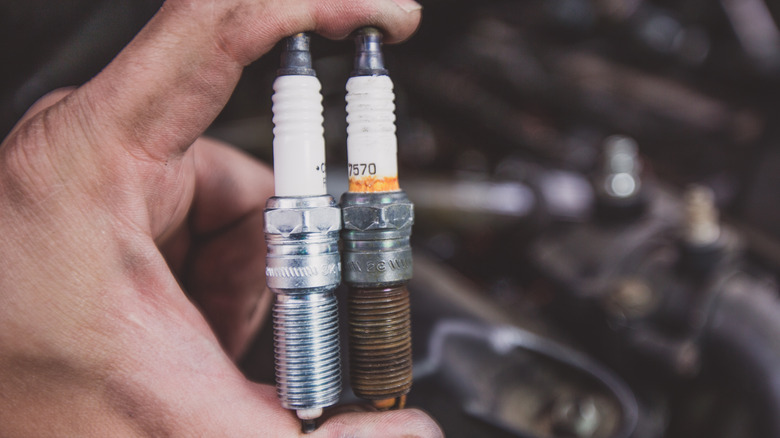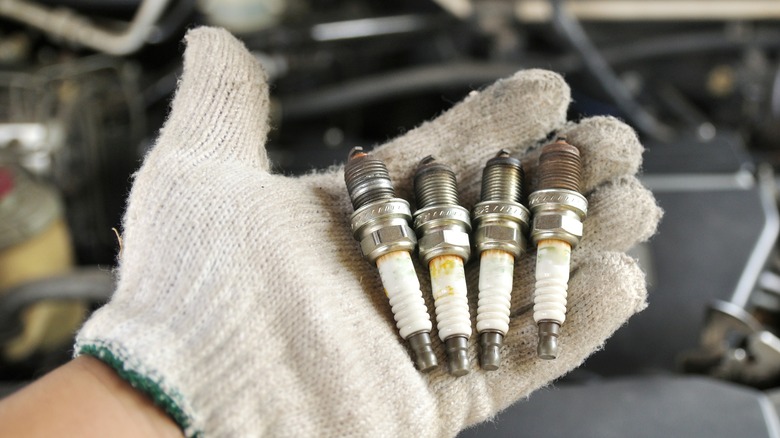How To Tell If You Have A Bad Spark Plug
An internal combustion engine needs three things to get going: Air, fuel, and spark. The throttle body and intake plenum feed air, while injectors spray the right fuel mix into the combustion chamber. Meanwhile, the spark plugs ignite the volatile mixture to produce power, and the cycle repeats. If anything goes wrong with the air, fuel, or spark delivery, the engine will refuse to start, idle roughly and run poorly, or die immediately after starting.
It's the reason why spark plugs are critical in a gasoline car, and like the coolant or motor oil, spark plugs are consumable — which means they need frequent cleaning or replacing. Then again, how often to replace the spark plugs will depend on many things; like the type of spark plug, the vehicle's operating conditions, the type of gasoline used, and the odometer reading.
Ordinary plugs need replacing every 30,000 miles, but platinum and iridium spark plugs could last up to 55,000 miles. If your vehicle has symptoms like hard starting and poor idling, it could mean the engine needs new plugs.
Symptoms of bad or failing spark plugs
Changing the oil, air filter, and spark plugs is a perfect way to kickstart your ownership journey if you just bought a used car. Not only will changing the oil and filter flush out dirt and contaminants from the engine, but it'll also give you or the mechanic time to inspect the underside of the engine for leaks, broken parts, and anything that could fail while on the road.
Meanwhile, removing the spark plugs is an easy way to gauge the engine's general health. For instance, black soot on the tips of the plugs may indicate a clogged air filter, excessive idling, or a rich fuel mixture. On the other hand, a burned insulator tip means the spark plugs are running hot and could point to poor ignition timing, an overheated engine, or a lean air/fuel mixture. Either is a sign that they need to be replaced.
If your car has difficulty starting, has a misfiring engine, idles poorly, has mediocre fuel economy, delivers sluggish performance, or fails emissions testing, it may be time to replace the spark plugs. Inspecting the spark plug wires for fraying or cracking is also a good idea. Equally important is to use the correct set of plugs for your car. Spark plugs may look generic, but there are many types for every make and model of car. Refer to the owner's manual to be sure which works for your vehicle.

